L’Île de Giglio, située au large de la côte toscane dans la mer Tyrrhénienne, à moins de 20 km du promontoire d’Orbetello, est la deuxième plus grande île de l’archipel toscan après Elbe.
D’origine volcanique, elle offre un mélange de paysages montagneux, de criques rocheuses et de plages de sable doré. Elle est réputée pour la pureté de ses eaux, sa tranquillité et ses sentiers de randonnée offrant des panoramas spectaculaires sur l’archipel toscan.
L’île s’étend sur environ 21 km² avec trois villages principaux : Giglio Porto, Giglio Castello et Giglio Campese. Giglio Castello, perché sur une colline, conserve un centre médiéval fortifié qui domine l’île et la mer environnante.
Son climat méditerranéen est doux, la végétation se compose principalement de maquis méditerranéen, avec pins, chênes verts et plantes aromatiques locales.
L’économie locale repose sur la pêche, l’agriculture (notamment la production de miel et de vin) et le tourisme, qui connaît un essor pendant la saison estivale.
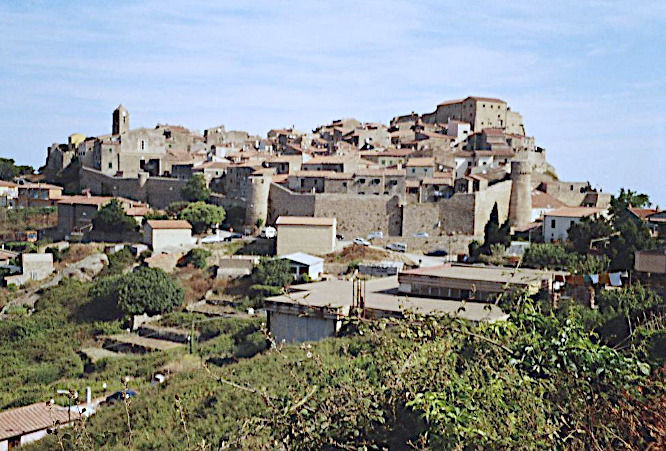
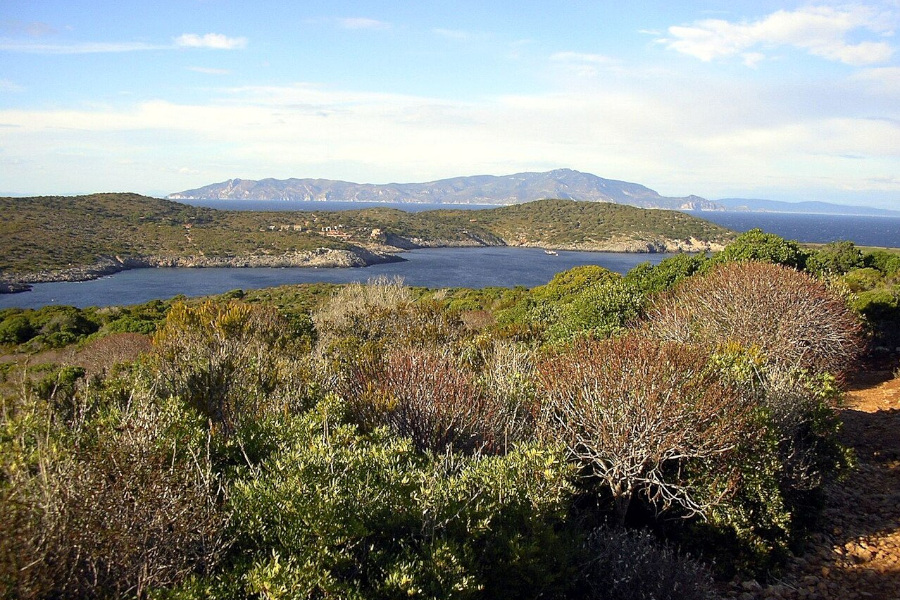
Highlights ” to see / to do ” in Giglio
- Giglio Castello: fortified medieval village with narrow streets and ramparts.
- Giglio Porto: picturesque port with seafood restaurants and shops.
- Giglio Campese: sandy beach and bay ideal for swimming and surfing.
- Hiking and coastal trails: panoramas over the Tyrrhenian Sea and other Tuscan islands.
- Punta del Capel Rosso Lighthouse: spectacular viewpoint on the southwest of the island.
- Diving and snorkeling: clear waters with diverse marine life.
- Churches and religious heritage: San Pietro, San Lorenzo, and medieval chapels.
- Local events: traditional festivals, gastronomy, and artisan markets.
Punta del Capel Rosso Lighthouse
The Punta del Capel Rosso Lighthouse is located at the southwestern tip of the island, on a volcanic promontory rising to about 250 meters. It is a strategic site for maritime observation and offers a panoramic view of the entire island as well as neighboring islands, including Giannutri and Montecristo.
Accessible via a hiking trail through the Mediterranean scrub and pine forests, the site allows immersion in nature and observation of local wildlife. The lighthouse, built in the 19th century, is still operational and continues to guide ships in the Tyrrhenian Sea. Sunsets from this promontory are known for their striking beauty and attract photographers and visitors.
The Villages of Giglio
Giglio Castello
Giglio Castello is the historical heart of the island, perched on a hill more than 400 meters above sea level. The village preserves Genoese and Pisan fortifications, its 12th-century medieval walls, watchtowers, and ancient gates reflecting its strategic role in maritime surveillance. Its narrow cobbled streets wind between stone houses, offering exceptional views of the port and surrounding sea.
Visitors can explore the Church of San Pietro, and the ramparts offer panoramic walks allowing views of the neighboring islands of the Tuscan Archipelago, such as Giannutri and Elba. The village also retains picturesque squares.
During summer, Giglio Castello hosts traditional festivals and concerts, enhancing the cultural and communal atmosphere of the place.
Giglio Porto
Giglio Porto is the main arrival point and the lively center of the island. Its port, sheltered by a natural bay, is lined with fresh seafood restaurants, cafes, and artisan shops. The waterfront promenade offers a fine view of fishing boats and ferries connecting the island to the mainland. The village features typical Tuscan architecture, with colorful houses and narrow streets.
Giglio Porto is also the departure point for many boat excursions around the island and to the other islands of the archipelago.
The local market offers fresh produce, seasonal vegetables, and seafood specialties, providing insight into the island’s gastronomy.
Giglio Campese
Giglio Campese is located on the northwest coast of the island and is renowned for its sandy beach and shallow waters, suitable for families. The beach is surrounded by cliffs and pines, offering a preserved natural setting. Coastal paths connect to neighboring coves and provide spectacular panoramas.
The village retains a few small villas and tourist facilities integrated into the landscape but remains relatively quiet compared to Giglio Porto.
Beaches and Coves
The island of Giglio has numerous picturesque beaches and coves, appreciated for their beauty and tranquility. The Spiaggia delle Cannelle is a small sandy beach with crystal-clear waters, accessible on foot from Giglio Porto, ideal for relaxing or swimming. The Cala delle Caldane, more rocky, offers areas perfect for diving and snorkeling, allowing exploration of the island’s seabed. The Cala del Campese combines sand and dunes, surrounded by pines, suitable for paddleboarding, surfing, or swimming. Finally, more secluded coves such as the Cala del Morto and the Cala dell’Arenella are only accessible on foot or by boat, offering a peaceful setting away from tourist areas.
Hiking and Nature
The island offers numerous trails and hiking routes suitable for all levels. The Sentiero del Capel Rosso leads to the lighthouse and offers spectacular views over the Tyrrhenian Sea and neighboring islands. Paths also cross hills and pine forests, allowing observation of the local flora, including holm oaks, pines, and aromatic plants. The island’s highest point provides breathtaking views of the entire Tuscan Archipelago and allows hikers to appreciate Giglio’s terrestrial and marine biodiversity.
At the southern tip of the island, the Punta del Capel Rosso Lighthouse is an essential spot for panoramic views.
Water Activities
Giglio is ideal for water sports enthusiasts. Kayaking and paddleboarding allow exploration of coves and sea caves around the island. The clear waters offer perfect conditions for snorkeling and diving, where Mediterranean fish and seagrass meadows can be observed. Numerous boat trips depart from Giglio Porto to the other islands of the archipelago, such as Giannutri and Montecristo, to discover unique and preserved coastal landscapes.
Where is Giglio and map
If you see this after your page is loaded completely, leafletJS files are missing.
Articles on the Tuscan Archipelago
- Islands of the Tuscan Archipelago
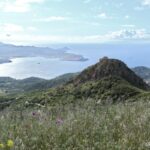 The Tuscan Archipelago National Park, established in 1996, covers approximately 61,000 hectares of land and 56,000 hectares of sea, making it the largest marine park in Europe. It includes the ...
The Tuscan Archipelago National Park, established in 1996, covers approximately 61,000 hectares of land and 56,000 hectares of sea, making it the largest marine park in Europe. It includes the ... - Elba island
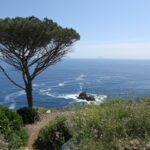 TheIsland of Elba is a heavenly place located more than 10 kilometers from the Tuscan coast. It is appreciated for its coast with its beaches, coves and diving sites, for its ...
TheIsland of Elba is a heavenly place located more than 10 kilometers from the Tuscan coast. It is appreciated for its coast with its beaches, coves and diving sites, for its ... - Capraia IslandCapraia est une petite île volcanique de l’archipel toscan, située en mer Tyrrhénienne à environ 62 km au nord-ouest de Livourne. C’est la troisième plus grande île de l’archipel après ...
- Pianosa Island
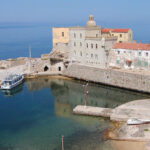 Pianosa, au cœur de l’archipel toscan, est une destination singulière qui attire aujourd’hui les visiteurs en quête de nature préservée et d’histoire insolite. Accessible uniquement dans le cadre d’excursions encadrées, ...
Pianosa, au cœur de l’archipel toscan, est une destination singulière qui attire aujourd’hui les visiteurs en quête de nature préservée et d’histoire insolite. Accessible uniquement dans le cadre d’excursions encadrées, ... - Giannutri island
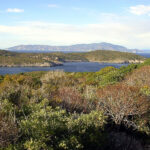 L’île de Giannutri est la plus méridionale de l’archipel toscan, située à une dizaine de kilomètres au sud de l’île du Giglio.De forme allongée (environ 5 km de long), elle ...
L’île de Giannutri est la plus méridionale de l’archipel toscan, située à une dizaine de kilomètres au sud de l’île du Giglio.De forme allongée (environ 5 km de long), elle ... - Montecristo Island
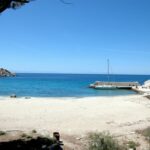 L’île de Montecristo est une petite île italienne située dans la mer Tyrrhénienne, au sud de l’île d’Elbe, faisant partie de l’archipel toscan. D’une superficie de 10,39 km², elle est ...
L’île de Montecristo est une petite île italienne située dans la mer Tyrrhénienne, au sud de l’île d’Elbe, faisant partie de l’archipel toscan. D’une superficie de 10,39 km², elle est ...
FAQ for Travelers to Giglio Island
- 1. How can I reach Giglio Island from the mainland?
- You can reach the island by ferry or hydrofoil from Porto Santo Stefano, in the Monte Argentario park. The crossing takes approximately 1 to 1.5 hours depending on the type of boat.
- 2. Is a vehicle necessary to visit the island?
- A vehicle is not essential, especially if you stay in the main villages or on beaches accessible on foot. Local buses and taxis also make it easy to get around, and renting a scooter or bike can also be a good idea.
- 3. What are the best times to visit Giglio?
- The high season runs from June to September for sun and beach activities. Spring and autumn offer mild temperatures and fewer tourists, ideal for hiking.
- 4. Is the island suitable for families?
- Yes, some beaches, such as Giglio Campese, are shallow and safe for children. The villages are easy to explore on foot, and there are family-friendly water activities.
- 5. What activities can be done on the island?
- Hiking along coastal trails, snorkeling and diving, kayaking, paddleboarding, visiting medieval villages, and exploring local religious and gastronomic heritage.
Official or Reliable English Sources to Discover Giglio Island
To prepare your trip to Giglio, here are some reliable English-language sources:
- Visit Giglio Island – Official Tourism Website: comprehensive information on accommodations, ferries, beaches, and activities on Giglio Island.
- Visit Tuscany – Giglio Island Travel Tips: insights into the island’s natural beauty, climate, and travel tips for visitors.
- Giglio Info: local tourist site with practical information, maps, and activity suggestions.
- History of Isola del Giglio: detailed account of the island’s history, from Etruscan origins to modern times.


No Comments Yet